- Home
- Hilary Mantel
Fludd Page 2
Fludd Read online
Page 2
Off Upstreet was Church Street, another steep hill; it was unpopulated, lined with ancient hedgerows, smoke and dust forming a perpetual ash-like deposit on the leaves. Church Street petered out at its summit into a wide track, muddy and stony, which in Fetherhoughton was known as the carriage-drive. Perhaps sometime in the last century a carriage had driven up it, conveying some pious person; the drive went nowhere except to the village school, to the convent, and to the Church of St. Thomas Aquinas. From the carriage-drive, footpaths led to the hamlet of Netherhoughton, and the moors.
Atop one of the smaller village streets sat a Methodist chapel, square and red, and about it was its cemetery, where chapel-going people came to early graves. There were a few Protestants sprinkled through the terraced rows; each yard might have some. The Protestants’ houses did not have, pinned to the door of the cupboard in the sitting room, a coloured picture of the Pontiff with a calendar beneath; but otherwise, their houses were not readily distinguishable.
And yet the Protestants were quite different, in the eyes of their neighbours. They were guilty of culpable ignorance. They refused to take on board the precepts of the True Faith. They knew that St. Thomas Aquinas was there, but they refused to go in it. They refused to turn over their children to Mother Perpetua for a good Catholic education, and preferred to send them on a bus to a school in another village.
Mother Perpetua would tell the children, with her famous, dangerously sweet smile: “We have no objection to Protestants worshipping God in their own way. But we Catholics prefer to worship Him in his.”
The Protestants were damned, of course, by reason of this culpable ignorance. They would roast in Hell. A span of seventy years, to ride bicycles in the steep streets, to get married, to eat bread and dripping; then bronchitis, pneumonia, a broken hip; then the minister calls, and the florist does a wreath; then devils will tear their flesh with pincers.
It is a most neighbourly thought.
The Church of St. Thomas Aquinas was a massive building; its walls were plastered by deposits of soot and grease, so that their original grey was black. It stood on a kind of pimple of higher ground, and this fact occasioned little flights of stone steps and cobbled ramps, slippery and mossy underfoot; clustering at the base of the tower, they looked like household terriers running at the feet of some dangerous, dirty tramp.
The Church was in fact less than a hundred years old; it had been built when the Irish came to Fetherhoughton to work in the three cotton mills. But someone had briefed its architect to make it look as if it had always stood there. In those poor, troubled days it was an understandable wish, and the architect had a sense of history; it was a Shakespearian sense of history, with a grand contempt of the pitfalls of anachronism. Last Wednesday and the Battle of Bosworth are all one; the past is the past, and Mrs. O’Toole, buried last Wednesday, is neck and neck with King Richard in the hurtle to eternity. This was—it must have been—the architect’s view. From the Romans to the Hanoverians, it was all the same to him; they wore, no doubt, leather jerkins and iron crowns; they burned witches; their buildings were stone and quaint and cold, their windows were not as our windows; they slapped their thighs and said prithee. Only such a vision could have commanded into being the music-hall medievalism of St. Thomas Aquinas.
The architect had begun in a vaguely Gothic way and ended with something Saxon and brutal. There was a tower at the west end, without spire or pinnacles, but furnished with battlements. The porch had stone benches, and a plain holy-water stoup, and malodorous matting that was beaten thin by scuffling feet—matting that was always sodden, and might have been composed of some thirsty vegetable matter. The doorway had a round arch of a Norman persuasion, but no recessed arches, no little shafts, no ornament, not so much as a lozenge, a zigzag, a chevron; stern had been the mood the day that doorway was designed, and the door itself was strapped and hinged in a manner that put one in mind of siege warfare and starvation and a populace reduced to eating its rats.
Inside the church, in the pit-like gloom, there was a deep font, without ornament, with a single plain shaft, and big enough to cope with a multiple birth, or dip a sheep. There was a west gallery for the organ, with a patch of deeper blackness beneath it; the gallery itself, though you would not know until you had swum into that blackness, was reached by a low little doorway with junior siege-hinges, and a treacherous spiral staircase, with risers a foot deep. There were two side chapels, two aisles, and it was in the arcades that the architect’s derangement was most evident, for the arches were round or pointed, seemingly as a consequence of some spur-of-the-moment decision, and as one blundered through the nave, the confusion of style gave the church a misleadingly heroic air, as if it had been built, like one of the great European cathedrals, in successive campaigns a hundred years apart. The shafts of the columns were squat and massive cylinders, made of a greyish, finely pitted stone, and their uncarved capitals resembled packing cases.
The lancet windows were grouped two by two, and surmounted by grudging tracery, here a circle, here a quatrefoil, here a dagger trefoil. In each of the lights stood a glass saint, bearing his name on an unfurling scroll, each scroll inscribed in an unreadable Germanic black-letter; the faces of these glass saints were identical, their expressions were all alike. The glass itself was of a mill-town sort; there was a light-refusing, industrial quality about its thick texture, and its colours were blatant and vile: a traffic-light green, a sugar-bag blue, and the dull but acidic red of cheap strawberry jam. There were stone flags underfoot, and the long benches were varnished with a treacly red stain; the doors to the single confessional were low and latched, like the doors to a coalshed.
Father Angwin and the bishop came out through the draughty vaulted passage from the sacristy, and emerged by the Lady chapel in the north aisle. They looked about; not that it profited them. In all, St. Thomas Aquinas was as dark as Notre-Dame and resembled it in one other alarming particular—that at any given moment, standing in one part, you lost all sense of what might be happening in another. You could not see the roof, although you had—in St. Thomas Aquinas—an uneasy, crawling feeling about it, that it might not be so far above your head at all, and that it might lower itself a little from time to time, just that little inch or so that betrayed its ambition to unite, one winter’s day, with the stone flags, and freeze into a solid block of unwrought masonry, with the worshippers between. The church’s inner spaces were aggregations of darkness, with channels of thicker darkness between. There were plaster saints—which the bishop now surveyed as best he might—and before most of them, in severe iron racks that looked like the bars of a beast-house, devotional candles burned; yet it was a lightless burning, like marsh-gas, a flickering in an unfelt, breathless wind. There were draughts, it was true, which followed each worshipper like a bad reputation, which dabbed at their ankles and climbed into their clothes, as cats do with people who do not like them. But when the church was empty the draughts lay quiet, only whistling from time to time about the floor; and the candle flames rose up towards the roof, straight and thin as dressmaker’s pins.
“These statues,” said the bishop. “Have you a pocket torch?” Father Angwin did not reply. “Then give me a tour,” the bishop demanded. “Start here. I cannot identify this fellow. Is he a Negro?”
“Not really. He’s been painted. A lot of them have. That’s St. Dunstan. Don’t you see his tongs?”
“What has he got tongs for?” the bishop asked rudely. He stared at the saint in a hostile way, his paunch thrust out.
“He was working at his forge when the devil came to tempt him, and the saint seized his nose with red-hot pincers.”
“I wonder what sort of temptations you might get while working at a forge.” The bishop peered into the darkness. “There are a lot of them, Father. You have more statues than any church in the diocese.” He passed on down the aisle. “How did you get them? Where did they come from?”
“They were here before my time. They’ve alwa
ys been here.”
“You know that is impossible. They were someone’s decision. Who is this woman with the pliers? This place is like an ironmonger’s shop.”
“That’s Apollonia. The Romans pulled her teeth out. She’s the patron saint of dentists.” Father Angwin looked up into the martyr’s downturned, expressionless face. He stooped and took a candle from the wooden box at the statue’s foot, and lit it from the solitary flame that burned below Dunstan. He carried it back with care, and fitted it into one of Apollonia’s empty candle-holders. “Nobody bothers with her. They don’t go in for dentistry here. Their teeth fall out quite early in life, and they find it a relief.”
“Pass on,” said the bishop.
“Here are my four Church Fathers. You will see St. Gregory in his Papal tiara.”
“I cannot see anything.”
“You must take my word for it. And St. Augustine, holding a heart, you see, pierced with an arrow. And the other Fathers here, St. Jerome with his little lion.”
“It really is a very small beast.” The bishop leant forward, put himself nose to nose with it. “Not realistic at all.”
Father Angwin put his hand on the lion’s arched mane, and traced the length of its stone back with his forefinger. “I like him the best of all the Fathers. I think of him in the desert with his wild eyes and his bare hermit’s knees.”
“Who’s left?” said the bishop. “Ambrose. Ambrose with his hive.”
“St. Beehive, the children call him. Similarly it was mentioned in the parish some two generations back that Augustine was the Bishop of Hippo, and since then I am afraid that there has been a great deal of confusion among the juveniles, passed on carefully, you see, by their parents.”
The bishop made a little growl, deep in his throat. Father Angwin had the feeling that he had somehow played into the bishop’s hands; that the bishop would think that it mattered, if they were confused.
“Can it matter?” he said quickly. “Look at St. Agatha here, poor Christian soul, carrying her breasts on a dish. Why is she the patron saint of bellfounders? Because a little mistake was made, with the shape; you can understand it. Why do we bless bread in a dish on 5 February? Because as well as looking like bells they look like bread rolls. It is a harmless mistake. It is more decent than the truth. It is less cruel.”
They had passed by now almost to the back of the church, and in the north aisle, opposite them, there were more saints; St. Bartholomew clutched the knife with which he had been flayed, St. Cecilia her portable organ. A Virgin, with the foolish expression imparted by a sickly smile and a chipped nose, held her blue arms out stiffly under her drapery; and St. Theresa, the Little Flower, glowered from beneath her wreath of roses.
The bishop crossed the church, and looked up into the Carmelite’s face, and tapped her foot. “I make exceptions, Father,” he said. “Our boys in the trenches of Flanders addressed their prayers through the Little Flower, and some of those who did so were I daresay not Catholic at all. There are saints for our time, Father, and this one here is a shining example to all Catholic womanhood. Perhaps this one may stay. I will give it consideration.”
“Stay?” the priest said. “Where are they going?”
“Out,” said the bishop succinctly. “And where, I care not. Somehow, Father Angwin, I shall drag you and your church and your parishioners into the 1950s, where we all quite firmly belong. I cannot have this posturing, Father, I cannot have this idolatry.”
“But they are not idols. They are just statues. They are just representations.”
“And if I were to walk out onto the street, Father, and I were to lay hold of one of your parishioners, do you think he would be able to distinguish, to my satisfaction, between that honour and reverence that we give the saints and that worship that belongs to God?”
“Windbag,” said Father Angwin. “Dechristianizer. Saladin.” He pitched his voice up. “It isn’t what you think. But the people here are very deficient in the power of prayer. They are simple people. I am a simple man myself.”
“I am aware of that,” the bishop said.
“The saints have their attributes. They have their areas of interest. A congregation latches on to them.”
“They must latch off,” said the bishop brutally. “I won’t have it. These are to go.”
As he passed Michael the Archangel, Father Angwin looked up and saw the scales in which that saint weighs human souls, and he dropped his eyes to Michael’s foot: a bare, muscled, claw-like foot, that had sometimes seemed to him like the foot of an ape. He passed under the gallery, into the thicker, velvet blackness where St. Thomas himself, the Angelic Doctor, stood central and square on his plinth, his stone gaze on the high altar, and the star that he held in his fine hands shedding lightless rays into the greater dark.
TWO
When they returned to the house, the bishop was boisterous and offensive. He wanted more tea, and biscuits too. “I won’t dispute it,” he said. “I won’t dispute it any more. Your congregation have superstitions that would disgrace Sicilian peasants.”
“But I am afraid,” Father Angwin said, “that if you take away the statues, and next the Latin, next the feast days, the fast days, the vestments—”
“I said nothing about this, did I?”
“I can see the future. They won’t come any more. Why should they? Why should they come to church? They might as well be out in the street.”
“We are not here for frills and baubles, Father,” said the bishop. “We are not here for fripperies. We are here for Christian witness.”
“Rubbish,” Father said. “These people aren’t Christians. These people are heathens and Catholics.”
When Agnes Dempsey came in with the Nice biscuits she could see that Father Angwin was in a poor state, quivering and sweating and passing his hand over his forehead. She hung about in the corridor, to catch what she could.
“Well, come now,” the bishop said. She could hear that he was alarmed. “Don’t take on so. I’m not saying you may not have an image. I’m not saying that you may not have a statue at all. I’m saying we must make an accommodation to the times in which we live.”
“I don’t see why,” Father said, adding audibly, “you fat fool.”
“Are you quite well?” the bishop said. “You keep talking in different voices. Insulting me.”
“If the truth insults you.”
“Never mind,” said the bishop. “I am of robust character. But I think, Father Angwin, that you must have an assistant. Some young chap, as strong as myself. It seems to me you know next to nothing of the tide of the times. Do you look at television?” Father Angwin shook his head. “You don’t possess a receiving set,” said the bishop. “You should, you know. Broadcasting is our greatest asset, wisely used. Why, I cannot count the good that has been done in the Republic, in helping the denominations understand each other, by Rumble and Carty’s ‘Radio Replies.’ Depend upon it, Father, that’s the future.” The bishop smote the mantelpiece, like Moses striking the rock.
Father Angwin surveyed him. Irish as he was, where had he got that Anglo complexion, rosy and cyanosed by turn? At a public school, surely, a minor English public school. If it had stood to Father Angwin, the bishop would not have been educated, or at least not in that way. He needed to know who was Galileo, and to chant in choir for a few hours at a time. The lives of the saints would have been enough for him, and the movement of the spheres, and a touch of practical wisdom on dairy farming or some such, that was useful to a pastoral economy.
All this he voiced to the bishop; the bishop stared. Outside the door Miss Dempsey stood with her blue eyes growing brighter, sucking one finger like a child who has burnt it on the stove. She heard footsteps above, in the passage, in the bedroom. It is ghosts, she thought, walking on my mopping. Angelic doctors, virgin martyrs. Doors slammed overhead.
The rain had stopped. Silence crept through the house. The bishop was a modern man, no patience with scruples, no time for
the ancient byways of faith; and what can you do, against a modern man? When Father Angwin spoke again, the note of contention had gone from his voice; fatigue replaced it. “Those statues are as tall as men,” he said.
“Get help,” said the bishop. “You have plenty of help. Get the parishioners to assist. Get the Men’s Fellowship on to it.”
“Where am I to put them? I can’t break them up.”
“Well, agreed. It wouldn’t be wholly decent. Stack them in your garage. Why don’t you do that?”
“What about my vehicle?”
“What? Is that the thing, outside?”
“My motor car,” Father said.
“That heap of junk? Why not expose it to the elements?”
“It’s true,” Father Angwin said humbly, “it’s a worthless car. You can see the road through the floor as you drive.”
“I can remember,” the bishop said abrasively, “when chaps got about on bicycles.”
Chaps, Father thought. Chaps is it, now? “You couldn’t go to Netherhoughton on a bicycle,” he said. “They’d knock you off it.”
“Good heavens,” the bishop said. He looked over his shoulder, being imperfectly certain of the geography of this most northerly outpost of the diocese. “Are they Orangemen up there?”
“They have an Orange Lodge. They are all in it, Catholics too. They have firework parties in Netherhoughton. Ox-roasts. They play football with human heads.”
“At some point you exaggerate,” the bishop said. “I am not sure at which.”
“Would you care to make a pastoral visit?”
“Indeed not,” said the bishop. “I have pressing matters. I must be getting back. You may keep Thomas Aquinas, St. Theresa the Little Flower, and the Holy Virgin herself, only try if you can to get her nose repaired.”

 Every Day Is Mother's Day
Every Day Is Mother's Day An Experiment in Love
An Experiment in Love Wolf Hall
Wolf Hall A Place of Greater Safety
A Place of Greater Safety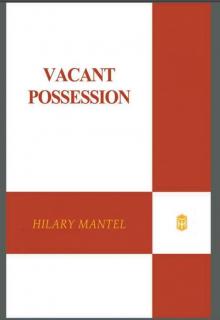 Vacant Possession
Vacant Possession The Giant, O'Brien
The Giant, O'Brien Beyond Black
Beyond Black Ink in the Blood: A Hospital Diary
Ink in the Blood: A Hospital Diary The School of English
The School of English Giving Up the Ghost
Giving Up the Ghost The Mirror and the Light: 2020’s highly anticipated conclusion to the best selling, award winning Wolf Hall series (The Wolf Hall Trilogy, Book 3)
The Mirror and the Light: 2020’s highly anticipated conclusion to the best selling, award winning Wolf Hall series (The Wolf Hall Trilogy, Book 3) Fludd
Fludd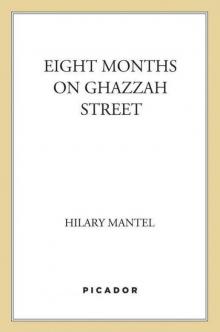 Eight Months on Ghazzah Street
Eight Months on Ghazzah Street Learning to Talk
Learning to Talk How Shall I Know You?: A Short Story
How Shall I Know You?: A Short Story A Change of Climate
A Change of Climate Bring Up the Bodies
Bring Up the Bodies The Assassination of Margaret Thatcher: Stories
The Assassination of Margaret Thatcher: Stories Beyond Black: A Novel
Beyond Black: A Novel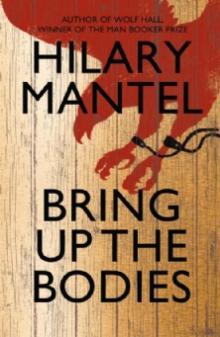 Wolf Hall: Bring Up the Bodies
Wolf Hall: Bring Up the Bodies Bring Up the Bodies tct-2
Bring Up the Bodies tct-2 Ink in the Blood
Ink in the Blood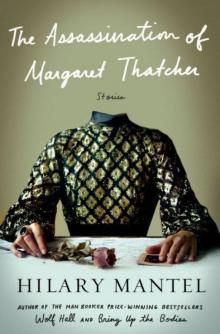 The Assassination of Margaret Thatcher
The Assassination of Margaret Thatcher Eight Months on Ghazzah Street: A Novel
Eight Months on Ghazzah Street: A Novel How Shall I Know You?
How Shall I Know You?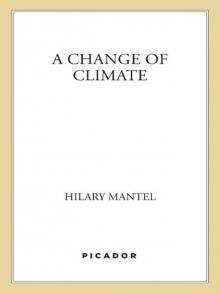 A Change of Climate: A Novel
A Change of Climate: A Novel The Giant, O'Brien: A Novel
The Giant, O'Brien: A Novel Fludd: A Novel
Fludd: A Novel A Place of Greater Safety: A Novel
A Place of Greater Safety: A Novel An Experiment in Love: A Novel
An Experiment in Love: A Novel